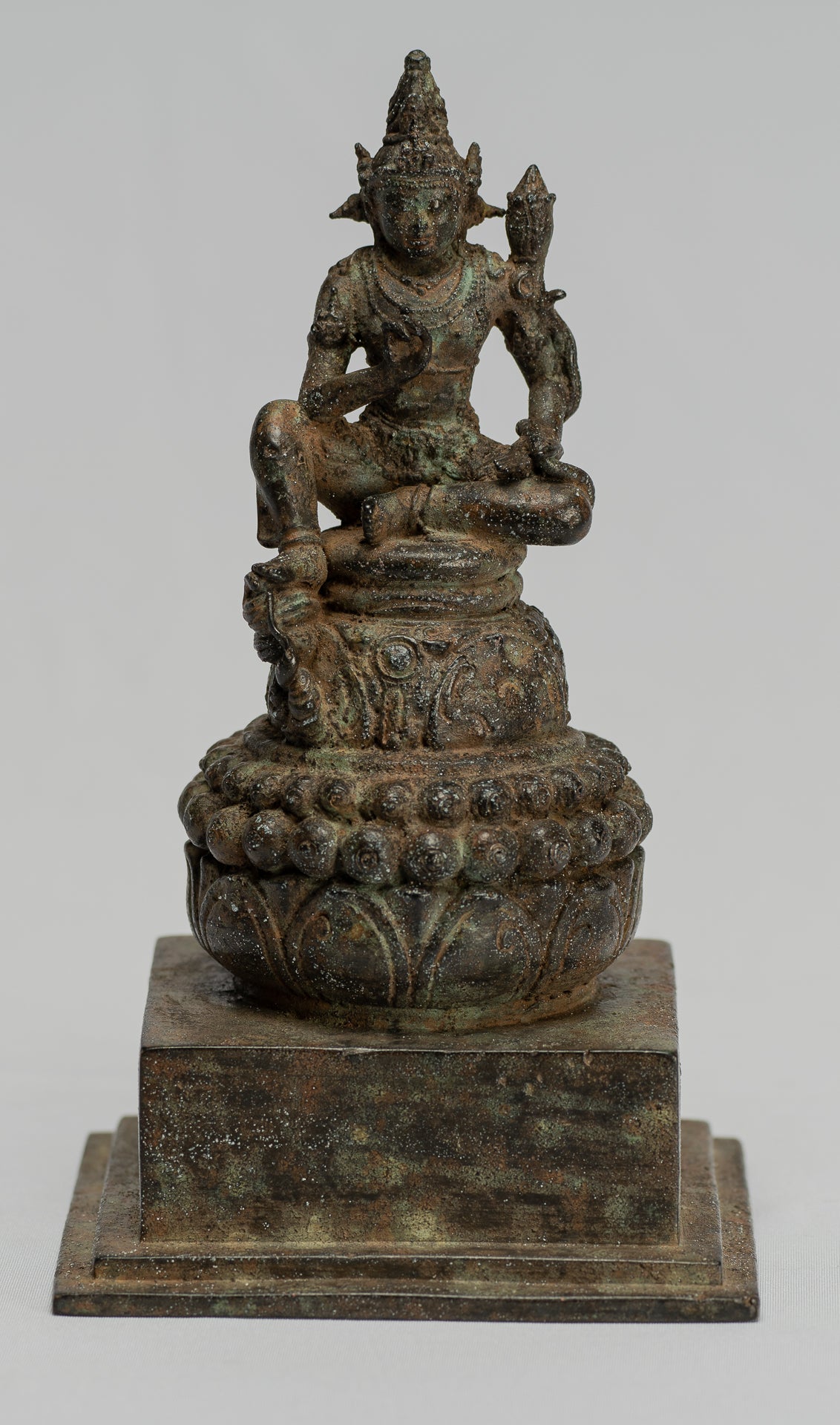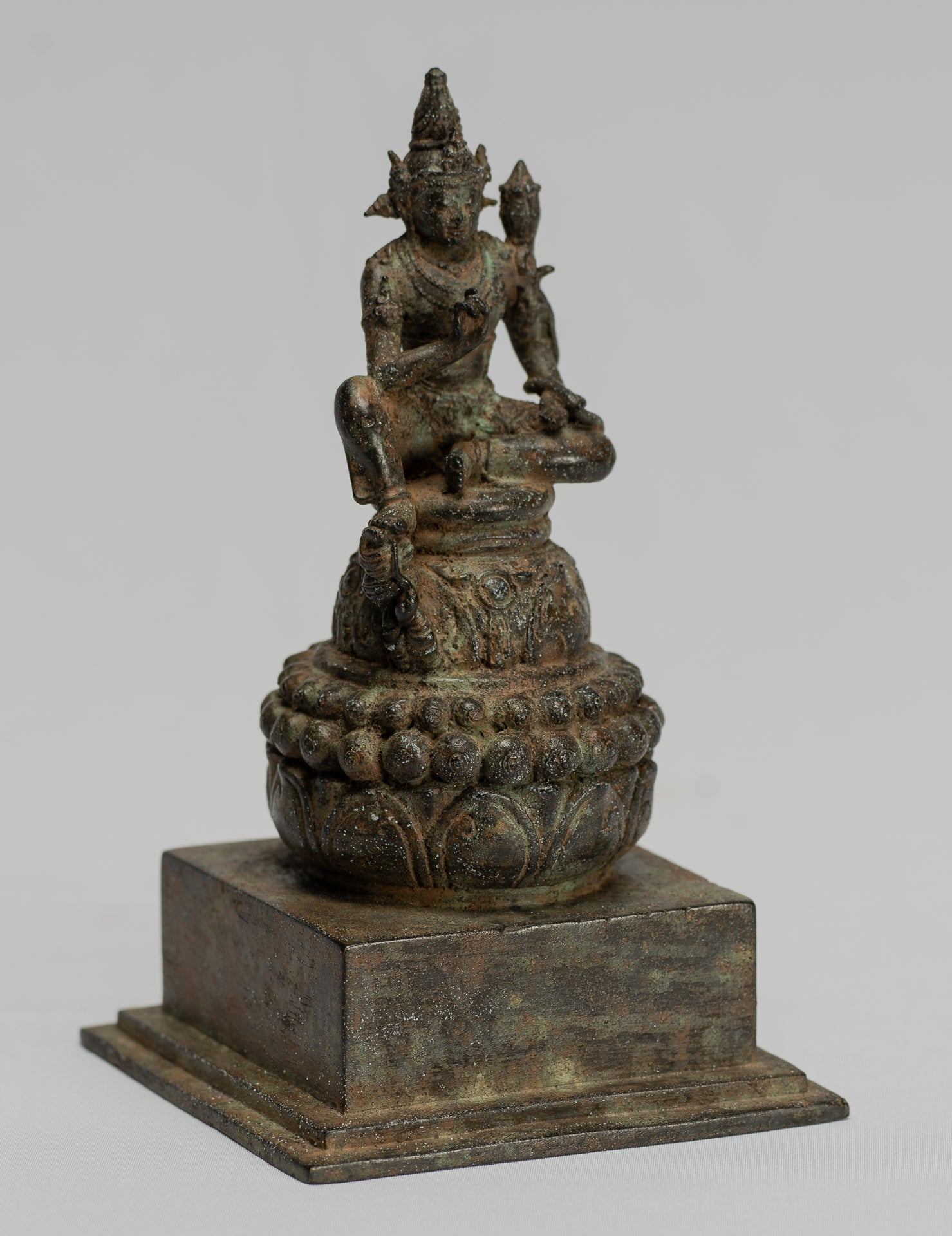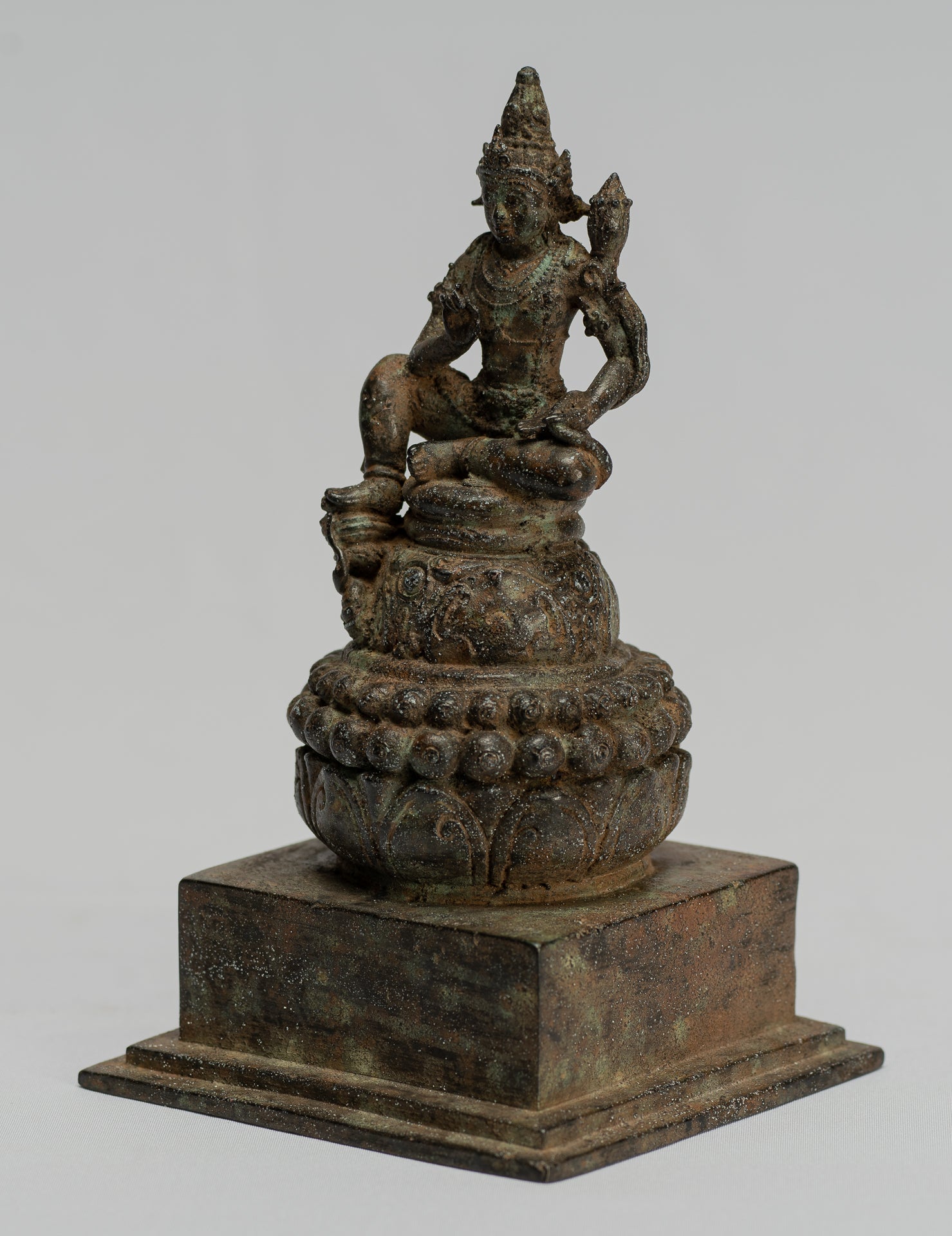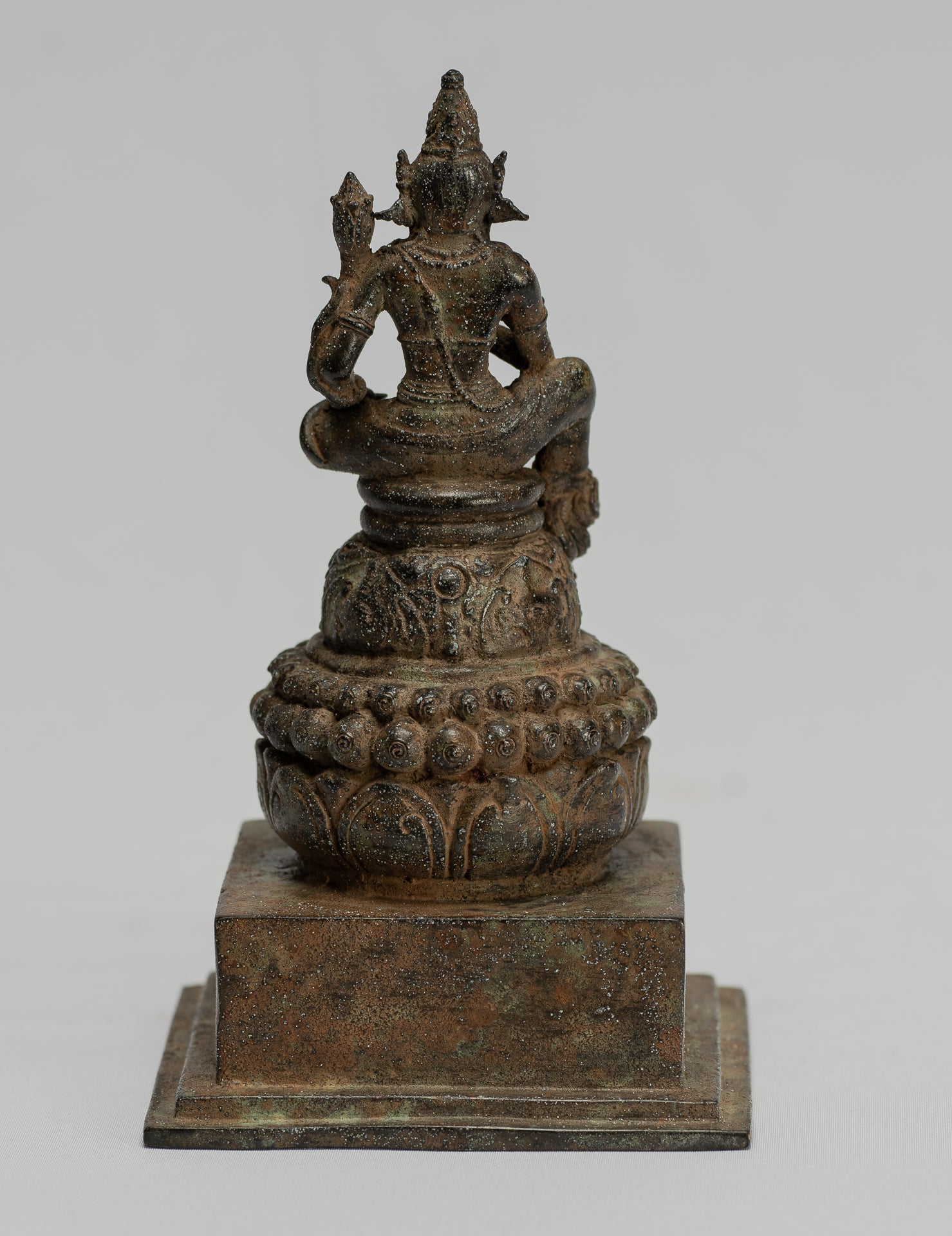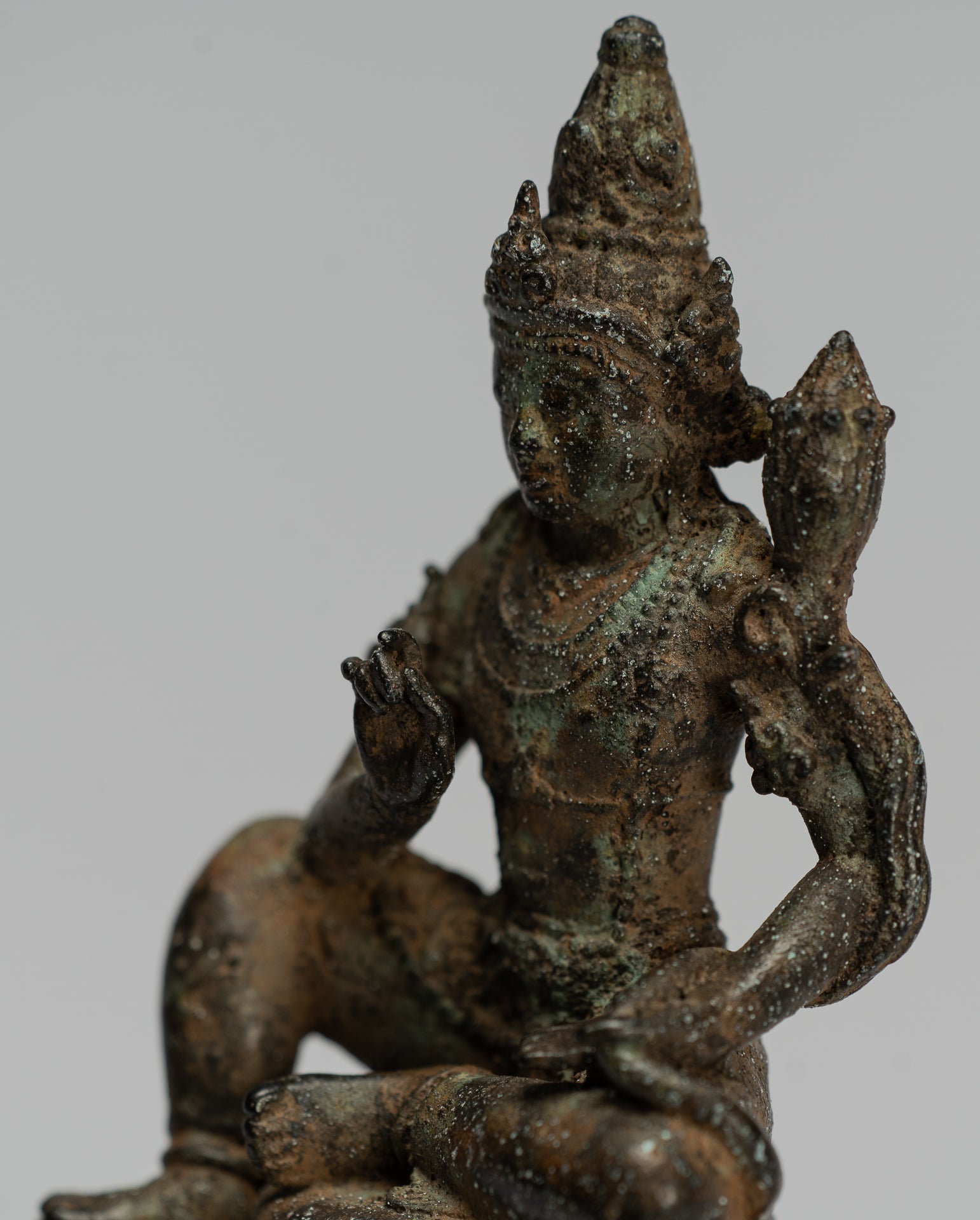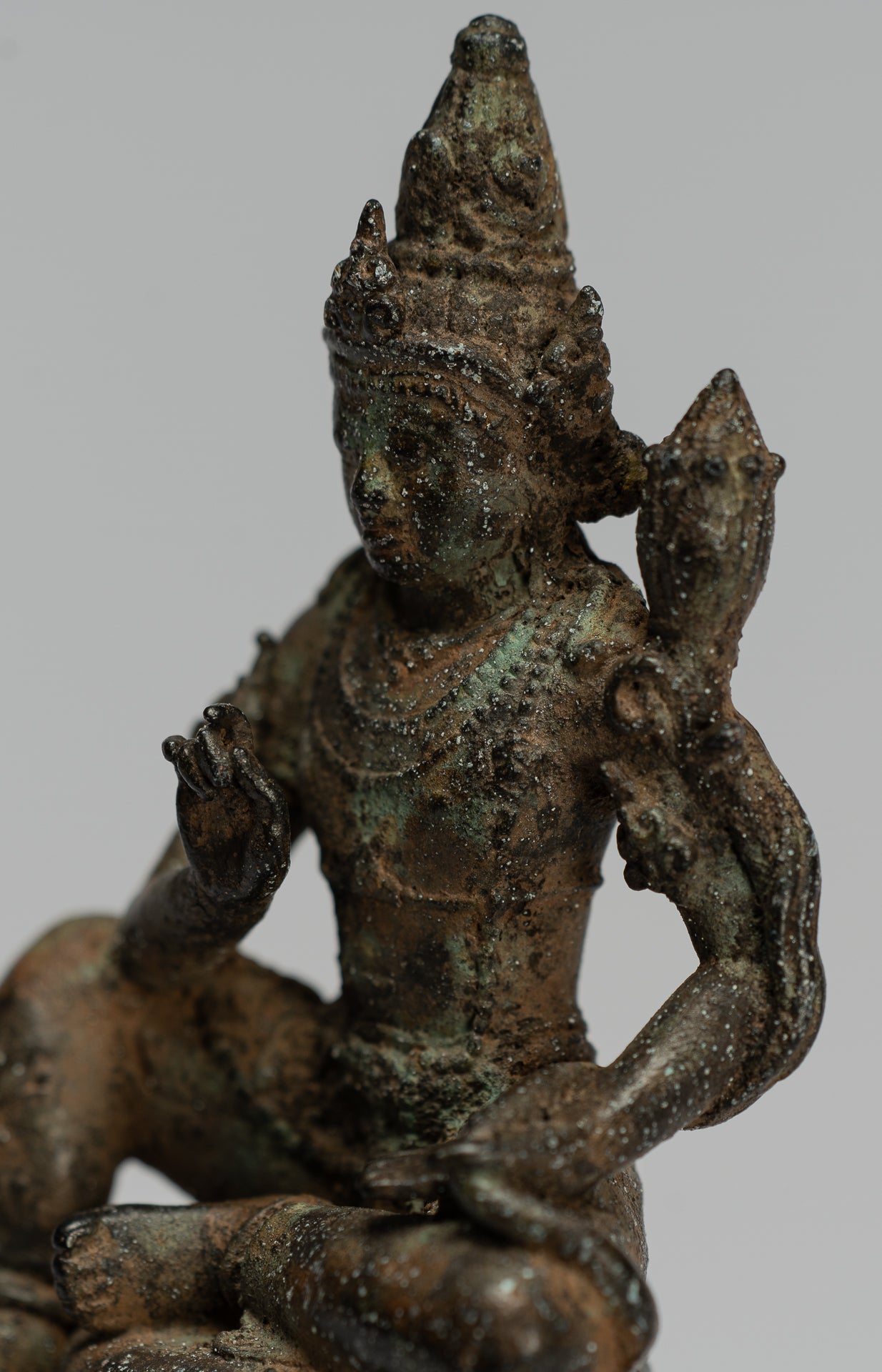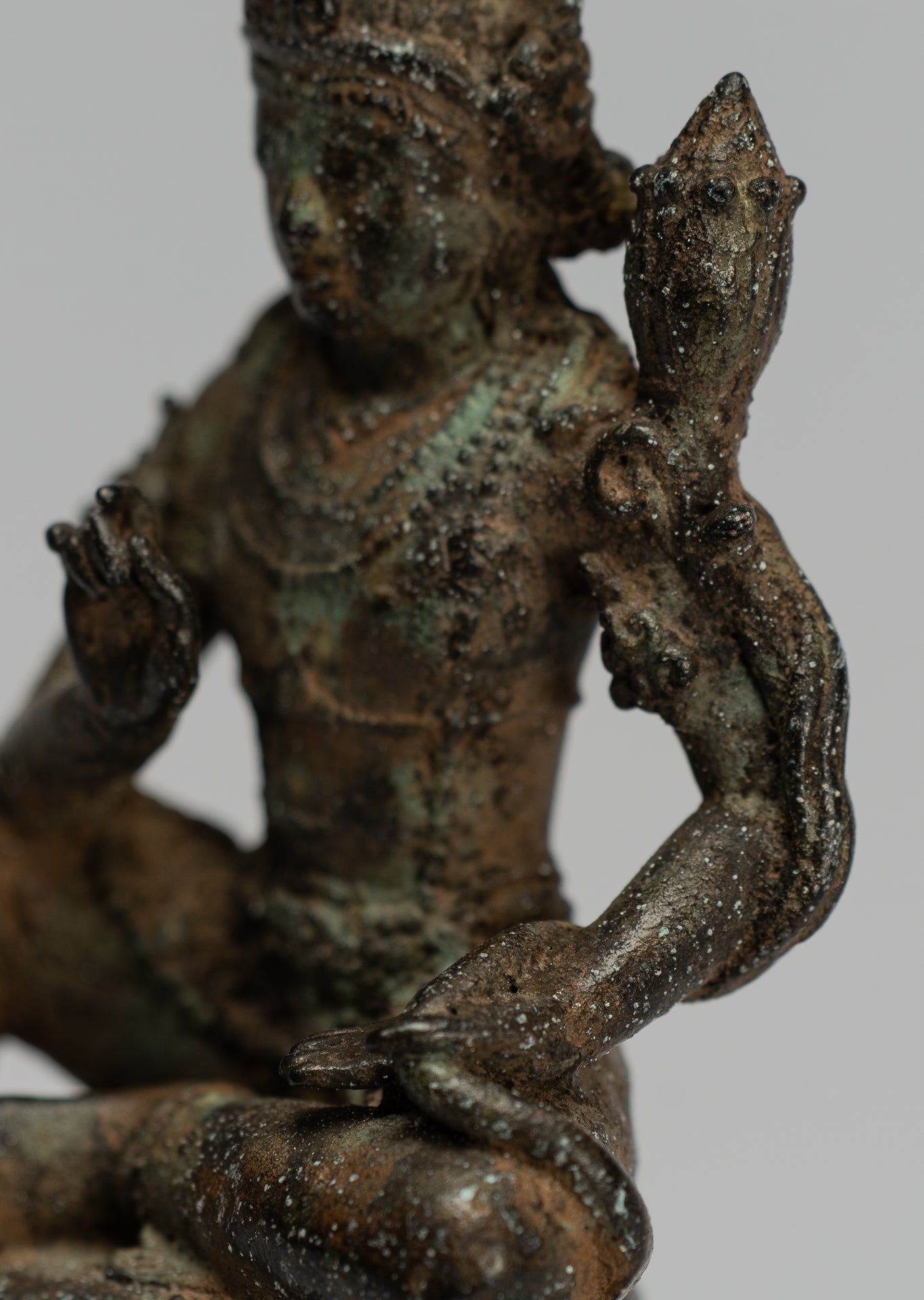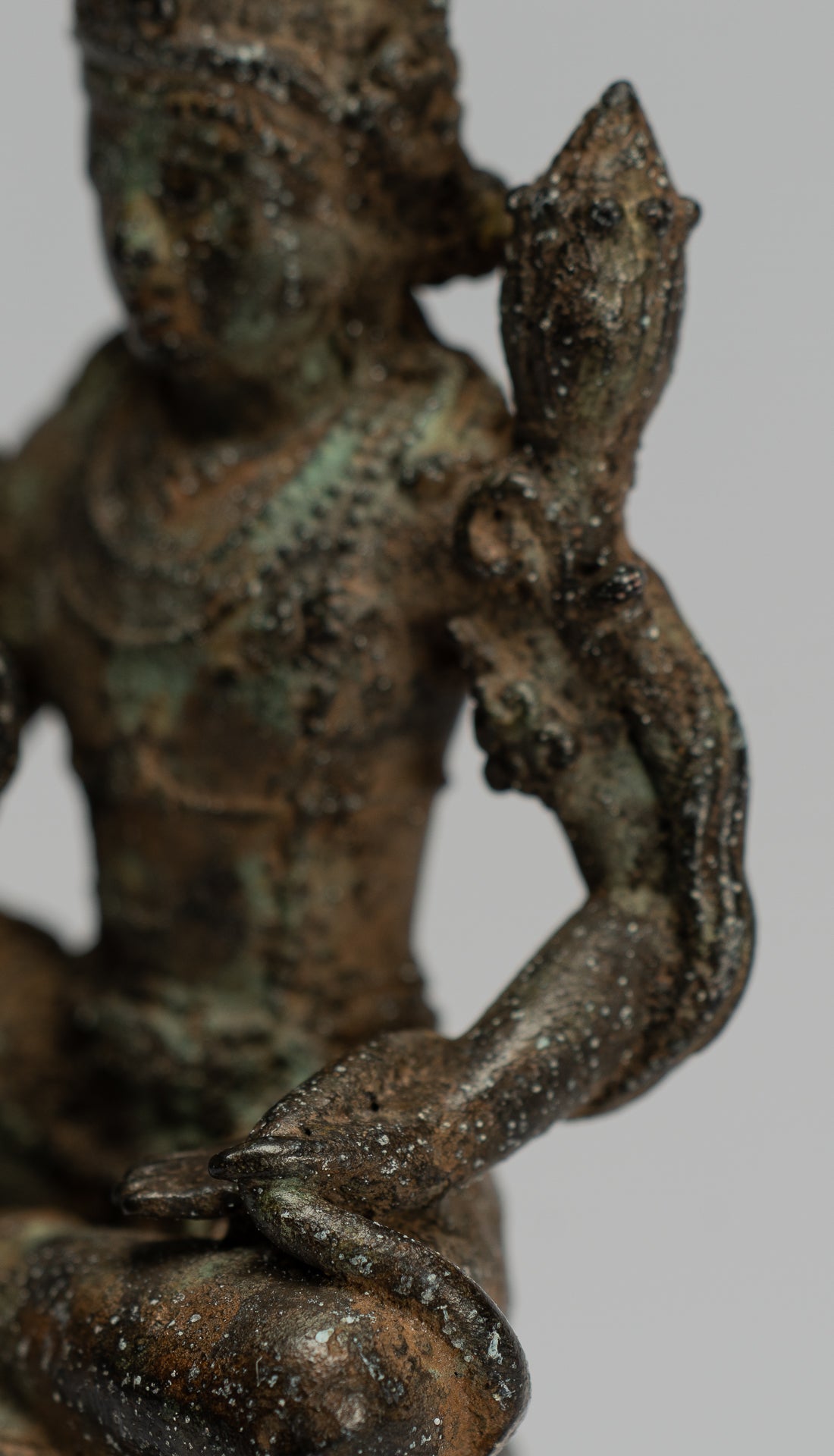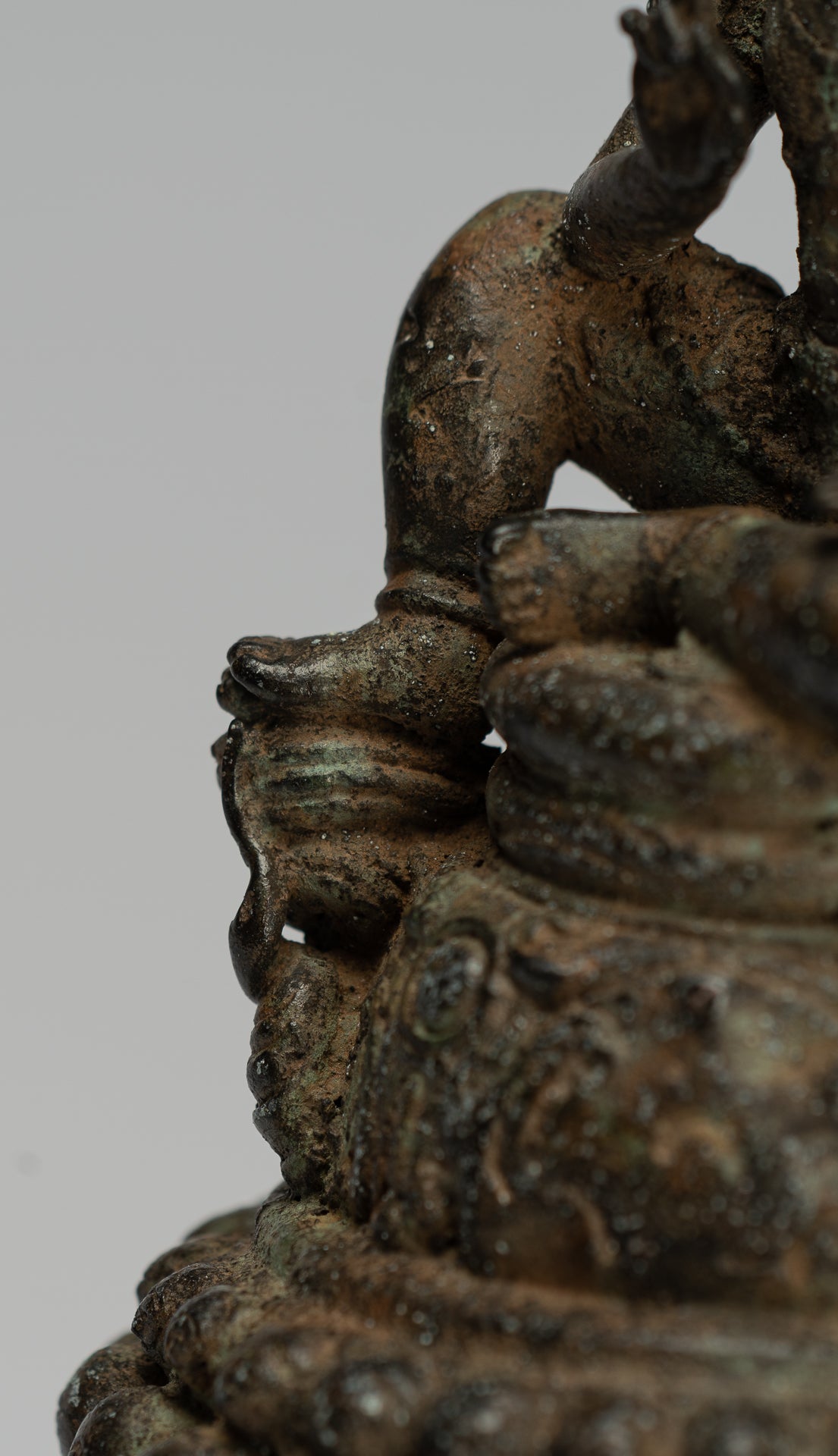-
Antique Java Style Majapahit Seated Bronze Devi Tara Statue - Protector & Preserver - 17cm/7"
Measurements Height 17cm/7"
An antique Java Style seated bronze Devi Tara sculpture in the 13th century Majapahit style.
In Buddhism, Tara is a Bodhisattva. She is the Goddess of Compassion. Here she is seated on a high pedestal that includes a lotus petal pedestal motif. She wears a richly bejewelled dhotis and upavitas.
Tara holds in her left hand the stem of a lotus flower which extends above her shoulder. The lotus flower represents purity, compassion and the giving of great joy to all. Her right hand is held in a gesture of teaching.
Her face has a serene downcast gaze. Tara wears a decorative Javanese style tiara, on her head, in front of her Kirita-Makuta or tall conical crown. This symbolises her control over Positive and Negative attitudes. She has an aquiline nose and elongated earlobes with large earrings.
SATISFACTION GUARANTEE - We have been offering SE Asian Art for many years and are proud of the reputation we have developed for fair and honest listings. However, if for any reason, whatsoever, you are unhappy with your purchase please just let us know and we will provide a full refund. We want you to be 100% happy with your purchase.
-
The majority of orders will be shipped with DHL. This is a secure, express and fully tracked service.
Items less than 2Kg we typically ship using Royal Mail.
Once we receive your order we try to ship all orders the same or next working day.
Large and/or fragile pieces requiring palletising, specialist crating and/or extra packaging may take a little longer. Palletised shipments will be delivered curbside.
All orders over 35 GBP will be shipped free of charge.

-
We genuinely hope that all purchases delight.
However, if they do not, regardless of reason, we will refund all orders upon receipt of the unwanted item. Just notify us within 14 days of receiving your order that you wish to make a return and send the piece back to us with 30 days of delivery.
Let Us Help You Find The Piece You Desire
Let Us Help You Find The Piece You Desire
Today the object has arrived: fast delivery and the item is in good condition and intact. It’s a very beautiful piece!!!. It was a pleasure to deal with you! Next time! Thank you so much. Having a good day.
Chiara, Bologna, Italy
They arrived yesterday safe and sound and are gorgeous! Thank you!
Juliann, San Diego, CA, USA
We received our package. They are beautiful pieces of art. I bought them as gifts for my children. Thank you
Sri, Philadelphia, PA, USA


